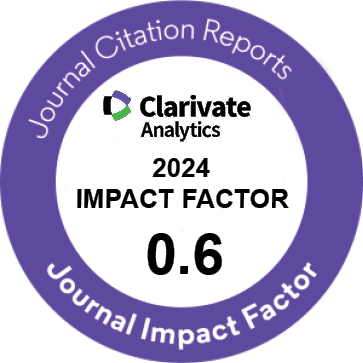| Original Article | |
| The Effects of Health Promotion Model on Preventive Behaviors of Osteoporosis during Premenopausal Period in Employed Women: A Quasi-experimental Study | |
| Mahsa Askarian1, Iran Jahanbin1, Fatemeh Vizeshfar2, Zahra Yazdanpanahi3, Hamideh Mohseni1 | |
| 1Department of Community Health, School of Nursing and Midwifery, Shiraz University of Medical Sciences, Shiraz, Iran 2Department of Nursing and Midwifery, Faculty of Nursing, Shiraz University of Medical Sciences, Shiraz, Iran 3Department of Midwifery, School of Nursing and Midwifery, Shiraz University of Medical Sciences, Shiraz, Iran |
|
|
IJWHR 2019; 7: 324?330 DOI: 10.15296/ijwhr.2019.54 Viewed : 5078 times Downloaded : 4572 times. Keywords : Women, Health promotion, Human, Osteoporosis, Pre-menopause |
|
| Full Text(PDF) | Related Articles | |
| Abstract | |
Objectives: Osteoporosis is one of the major problems of the healthcare system and is a common debilitating metabolic disease among women. Pender?s health promotion model which is a conceptual framework and describes a wide range of health behavior was selected to assess the behavioral changes in this study. Materials and Methods: A total of 122 women aged between 30 and 45 were selected to take part in this quasi-experimental study. The samples were split into experimental and control groups using the block randomization method (block size of 4). The educational program, based on Pender?s model, was performed weekly. Pender?s questionnaire on preventive behaviors of osteoporosis was filled out before and two months after interventions by both groups. SPSS software version 18.0 was used for data analysis. Results: In terms of qualitative and quantitative data (demographic characteristics), there was no meaningful difference between the two groups (P > 0.05). The mean difference (MD) in the score of the perceived benefits and barriers, perceived self-efficacy, programming, competing demand, and their commitment to a plan of actions increased in the experimental group after the intervention (P < 0.001). However, there was no significant increase in the mean score of social support in the experimental group after the intervention (P > 0.05). Conclusions: It can be assumed that teaching preventive behaviors of osteoporosis through Pender?s health promotion model was effective. Considering the findings, it is obvious that continuing this program can maintain and consolidate the changes which have been made in behaviors. |
Cite By, Google Scholar
Google Scholar
PubMed
Online Submission System
 IJWHR ENDNOTE ® Style
IJWHR ENDNOTE ® Style
 Tutorials
Tutorials
 Publication Charge
Women's Reproductive Health Research Center
About Journal
Publication Charge
Women's Reproductive Health Research Center
About Journal
Aras Part Medical International Press Editor-in-Chief
Arash Khaki
Mertihan Kurdoglu Deputy Editor
Zafer Akan























